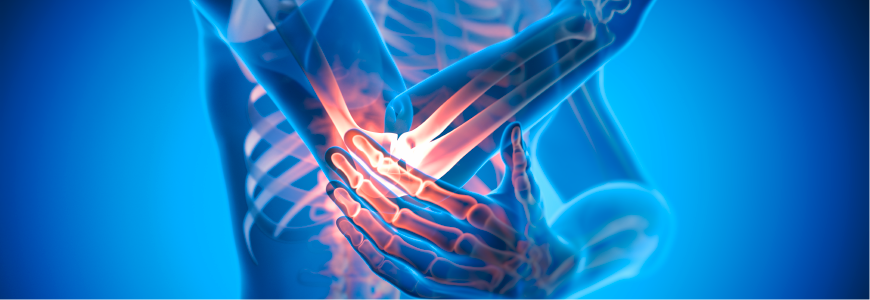A 12-year-old, level-10 competitive gymnast faced increasing elbow pain. When she couldn’t fully bend or straighten her elbow, she turned to the Duke physical therapists at her gym for help. The physical therapists referred her to sports medicine orthopaedic surgeon Jocelyn Ross Wittstein, MD. Coordinating care with therapists through an outreach program has helped to quickly identify cases like these, according to Wittstein.
Radiographs revealed osteochondritis dissecans (OCD) of the capitellum, with a broken and dislodged fragment of bone and cartilage limiting her range of motion. Typically, such injuries in athletes like baseball players are treated by arthroscopically removing the fragment and debriding the defect site, but for gymnasts, whose elbows must bear their weight, this treatment is not always sufficient.
What did Dr. Wittstein do to return this injured gymnast to competition?
Wittstein performed osteochondral allograft transplantation surgery (OATS) to restore mobility without sacrificing weightbearing capabilities. After removing the fragment arthroscopically, Wittstein made an incision over the capitellum. She smoothed the defect’s edges and prepared a shallow socket to receive a donor plug of bone and cartilage. The donor plug was then sized and placed in the socket before the site was closed.
While this procedure can be done with an autologous graft, usually from the knee, in a sport which loads the knees as well as the arms, this option is not appealing to athletes. The donor graft eliminates the impact of the procedure on the normal knee joint for the patient and can make recovery easier with only one surgical site.
As a former collegiate gymnast, Wittstein understood the demands of the case. “I have a unique background with knowledge of the sport and what skills gymnasts are returning to,” says Wittstein. “My experience and training help me better understand how to return our patients to sport.”
The athlete remained in a splint for 10 days and a hinged elbow brace for six weeks. Physical therapists helped to maintain her strength and regain her range of motion during recovery. Although the gymnast had to avoid weightbearing movements on her arm initially, she returned to competition as a level-10 gymnast nine months after the procedure. A year later, she remained asymptomatic.
Many young athletes participate in sport dozens of hours per week, which can result in overuse and repetitive use injuries. Physicians must help young athletes listen to their bodies and seek care when pain presents. If caught early, conditions like OCD of the capitellum can be successfully treated without surgery or with less invasive surgeries. At any stage, Duke sports medicine helps young athletes get the care they need. “Our department has a deep wealth of knowledge and experience,” says Wittstein.
